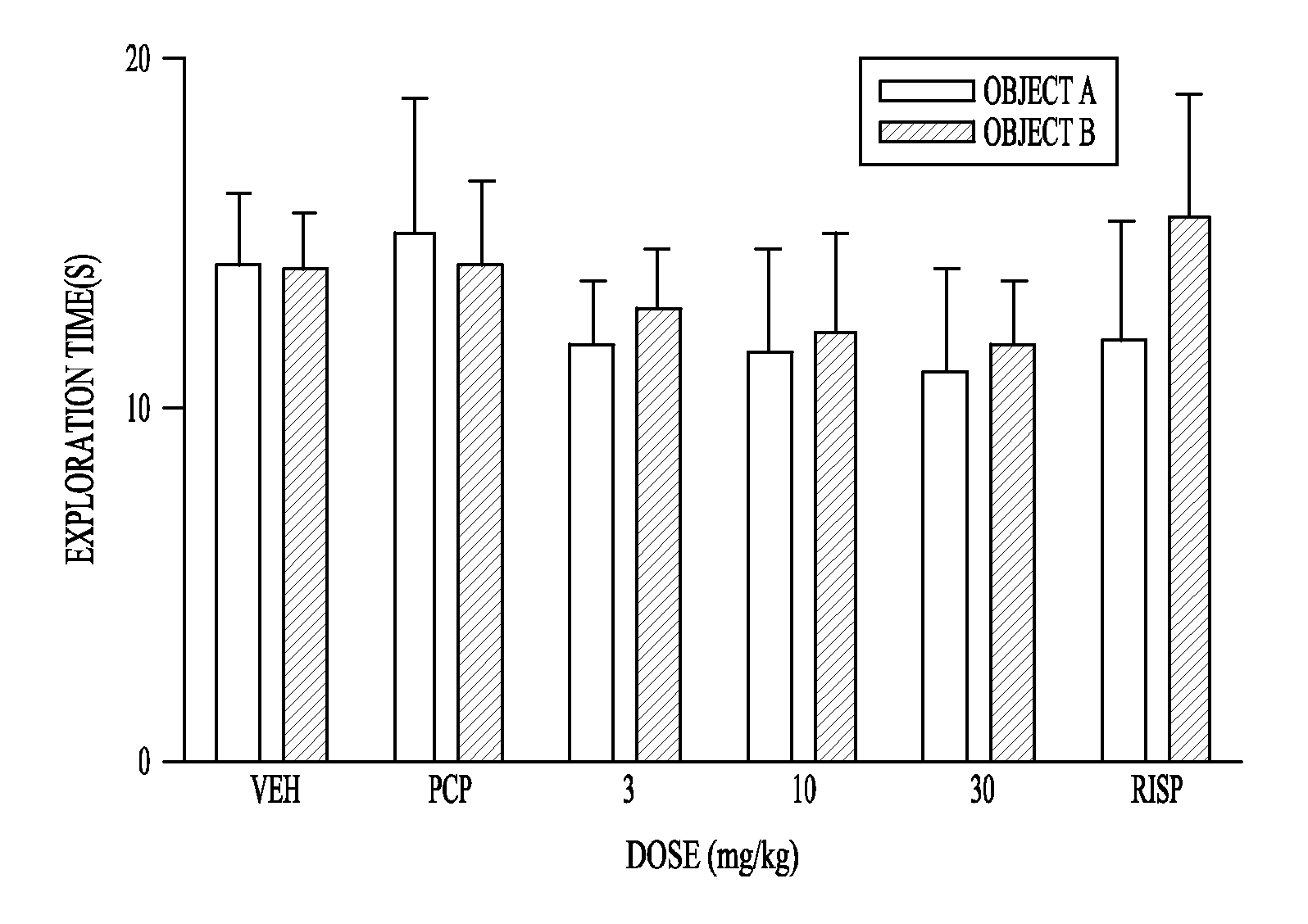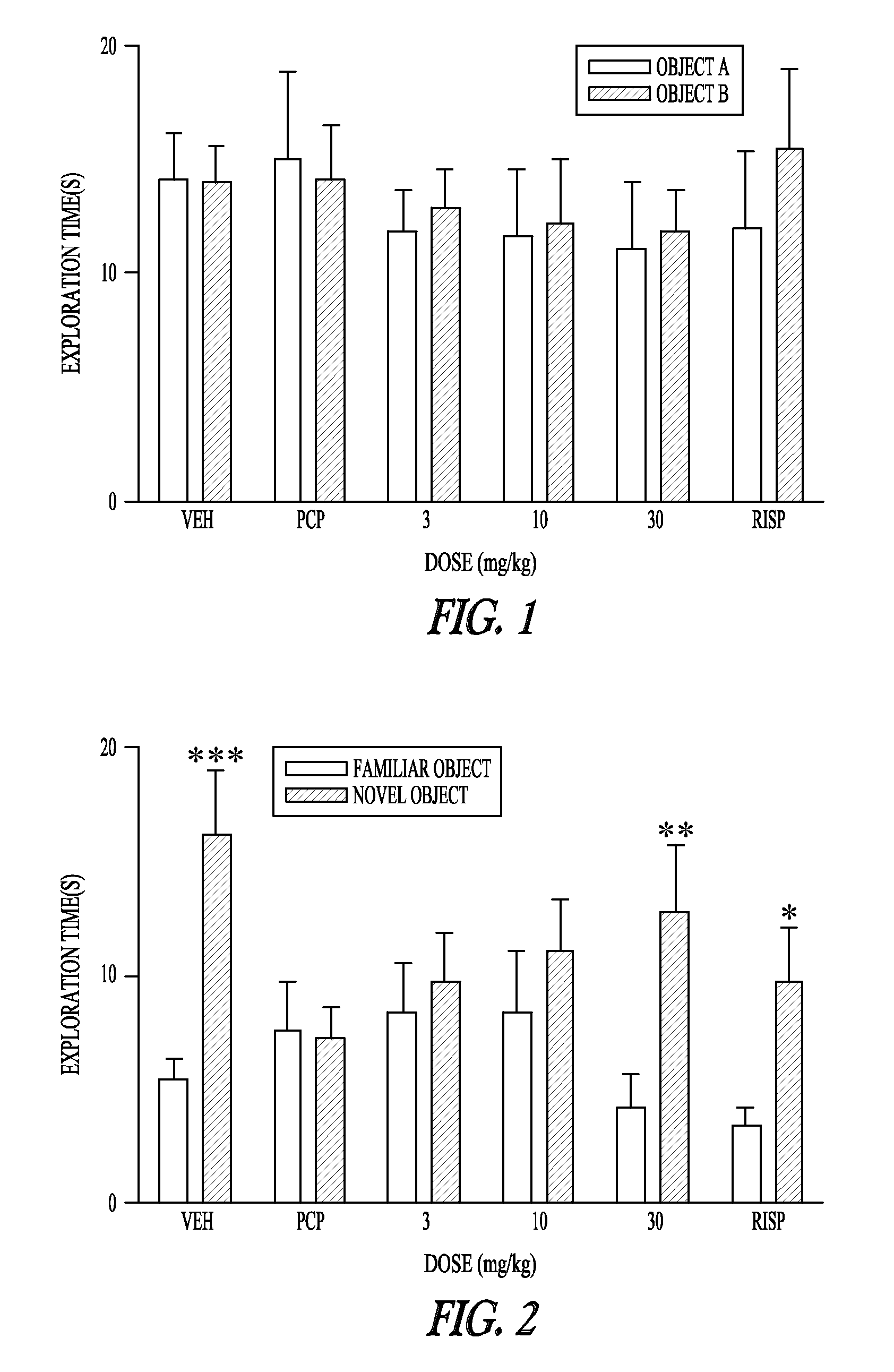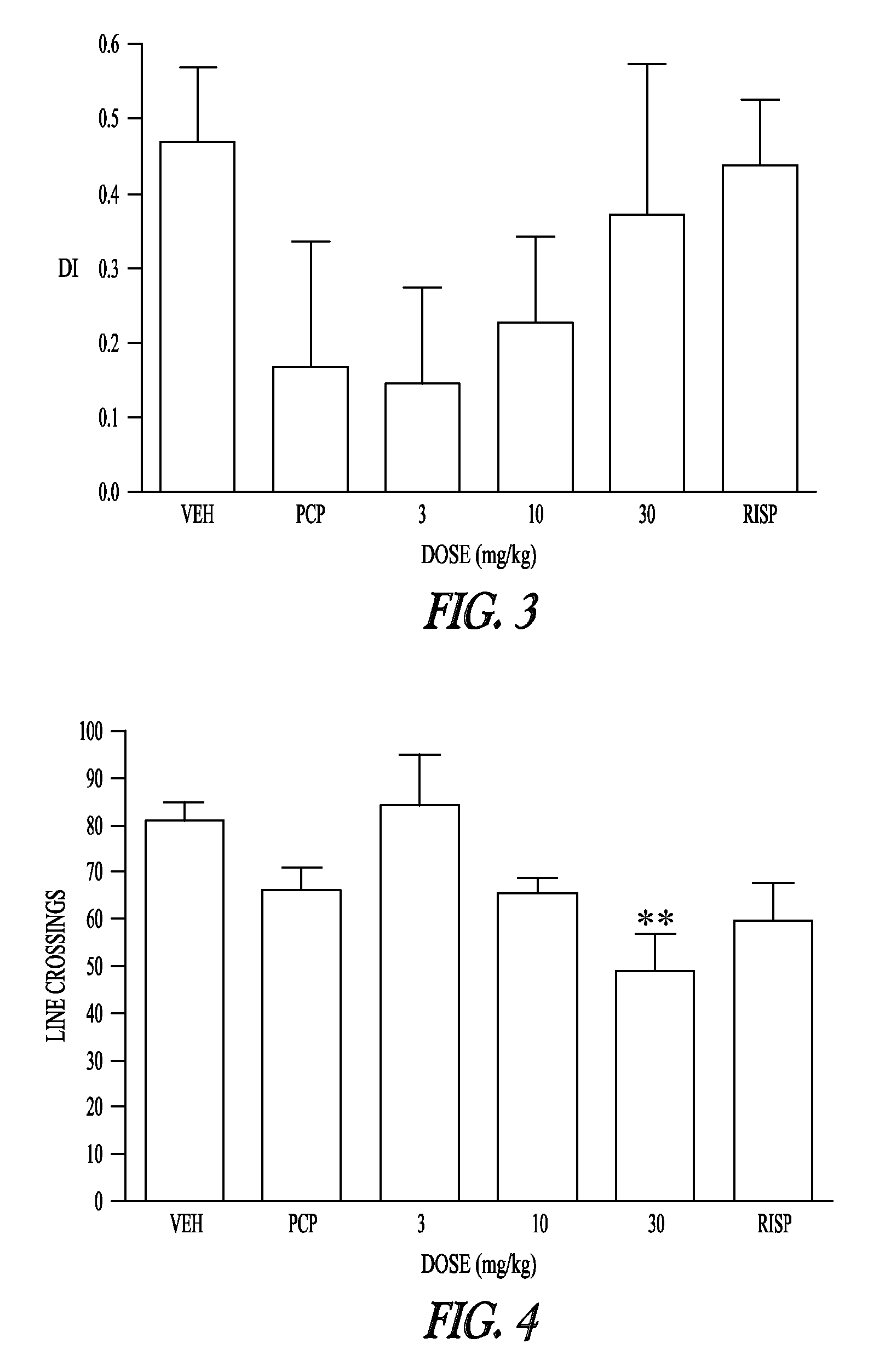Pharmaceutical compounds
a technology of dihydrotetrabenazines and pharmaceutical compounds, applied in the field of pharmaceutical compounds, can solve the problems of focal cognitive dysfunction, inability to detect changes in behaviour,
- Summary
- Abstract
- Description
- Claims
- Application Information
AI Technical Summary
Benefits of technology
Problems solved by technology
Method used
Image
Examples
example 1
Preparation of 2S,3S,11bR and 2R,3R,11bS Isomers of Dihydrotetrabenazine
1A. Reduction of RR / SS Tetrabenazine
[0096]
[0097]1M L-Selectride® in tetrahydrofuran (135 ml, 135 mmol, 2.87 eq.) was added slowly over 30 minutes to a stirred solution of tetrabenazine RR / SS racemate (15 g, 47 mmol) in ethanol (75 ml) and tetrahydrofuran (75 ml) at 0° C. After addition was complete the mixture was stirred at 0° C. for 30 minutes and then allowed to warm to room temperature.
[0098]The mixture was poured onto crushed ice (300 g) and water (100 ml) added. The solution was extracted with diethyl ether (2×200 ml) and the combined ethereal extracts washed with water (100 ml) and partly dried over anhydrous potassium carbonate. Drying was completed using anhydrous magnesium sulphate and, after filtration, the solvent was removed at reduced pressure (shielded from the light, bath temperature <20° C.) to afford a pale yellow solid.
[0099]The solid was slurried with petroleum ether (30-40° C.) and filtered ...
example 2
Preparation of 2R,3S,11bR and 2S,3R,11bS Isomers of Dihydrotetrabenazine
2A. Preparation of 2,3-Dehydrotetrabenazine
[0122]A solution containing a racemic mixture (15 g, 47 mmol) of RR and SS tetrabenazine enantiomers in tetrahydrofuran was subjected to reduction with L-Selectride® by the method of Example 1A to give a mixture of the 2S,3R,11bR and 2R,3S,11bS enantiomers of dihydrotetrabenazine as a white powdery solid (12 g, 80%). The partially purified dihydrotetrabenazine was then dehydrated using PC15 according to the method of Example 1B to give a semi-pure mixture of 11bR and 11bS isomers of 2,3-dehydrotetrabenazine (the 11bR enantiomer of which is shown below) as a yellow solid (12.92 g, 68%).
[0123]
2B. Epoxidation of the Crude Alkene from Example 2A
[0124]
[0125]To a stirred solution of the crude alkene from Example 2A (12.92 g, 42.9 mmol) in methanol (215 ml) was added a solution of 70% perchloric acid (3.70 ml, 43 mmol) in methanol (215 ml). 77% 3-Chloroperoxybenzoic acid (15.5...
example 3
Alternative Method of Preparation of Isomer B and Preparation of Mesylate Salt
3A. Reduction of RR / SS Tetrabenazine
[0154]
[0155]1M L-Selectride® in tetrahydrofuran (52 ml, 52 mmol, 1.1 eq) was added slowly over 30 minutes to a cooled (ice bath), stirred solution of tetrabenazine racemate (15 g, 47 mmol) in tetrahydrofuran (56 ml). After the addition was complete, the mixture was allowed to warm to room temperature and stirred for a further six hours. TLC analysis (silica, ethyl acetate) showed only very minor amounts of starting material remained.
[0156]The mixture was poured on to a stirred mixture of crushed ice (112 g), water (56 ml) and glacial acetic acid (12.2 g). The resulting yellow solution was washed with ether (2×50 ml) and basified by the slow addition of solid sodium carbonate (ca. 13 g). Pet-ether (30-40° C.) (56 ml) was added to the mixture with stirring and the crude β-DHTBZ was collected as a white solid by filtration.
[0157]The crude solid was dissolved in dichlorometh...
PUM
| Property | Measurement | Unit |
|---|---|---|
| pKa | aaaaa | aaaaa |
| pKa | aaaaa | aaaaa |
| pKa | aaaaa | aaaaa |
Abstract
Description
Claims
Application Information
 Login to View More
Login to View More - R&D
- Intellectual Property
- Life Sciences
- Materials
- Tech Scout
- Unparalleled Data Quality
- Higher Quality Content
- 60% Fewer Hallucinations
Browse by: Latest US Patents, China's latest patents, Technical Efficacy Thesaurus, Application Domain, Technology Topic, Popular Technical Reports.
© 2025 PatSnap. All rights reserved.Legal|Privacy policy|Modern Slavery Act Transparency Statement|Sitemap|About US| Contact US: help@patsnap.com



